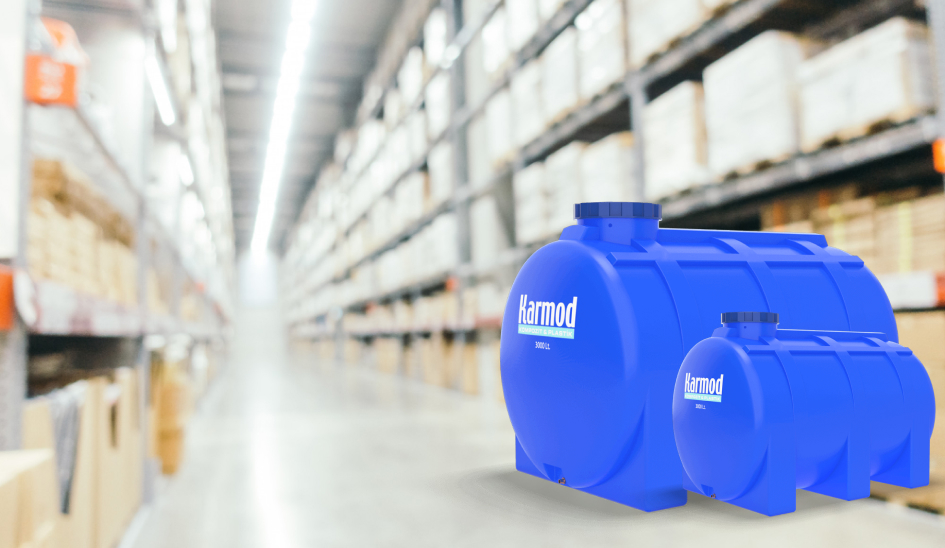
These tanks have found applications in almost every place around us in recent years. This is because these tanks offer many advantages to users. Some of these advantages are related to prices, while others are related to water tank designs and durability. Generally, when we look at their purposes of use, we can define them as vehicles where one or more contents are stored, preserved, and discharged for use when needed.
These tanks can be used not only in our homes but also in workplaces and even industries. They play significant roles in the production, storage, and transportation of raw materials. They can also have a positive impact on our water bills at home, which can be achieved through rainwater harvesting systems. However, when purchasing tanks with such advantages, some important points can be overlooked. For those considering purchasing these tanks, we have decided to outline these key points. Here are eight important factors you need to consider when buying such tanks:
Choose a Water Tank According to Your Usage Needs
The reason for obtaining these tanks is related to your current usage needs. Looking at these purposes, usage goals are of great importance. There are also some tanks specific to certain usage purposes. Pickle and brine tanks can be given as examples of these. Silo tanks, on the other hand, are mostly used for storing materials like grains and detergents. Tanks installed underground are used for storing substances such as diesel and fuel. Horizontal tanks can also be used in areas such as caravans, trucks, and yachts since they are easy to transport.
What Are the Features of Water Tanks?
These tanks have many features that are determined by the raw materials used in production. Polyethylene, polyester, and stainless steel can be used as materials in the production of these tanks. While polyethylene tanks are produced in one piece, tanks made from polyester and stainless steel are produced with additional welding and riveting. The welding and riveting method allows these tanks to be easily assembled on-site.
All tanks are resistant to ultraviolet radiation. This feature is important as harmful radiation entering the tank can jeopardize the liquid or food stored within. Therefore, these tanks do not support the growth of algae inside. In terms of size diversity, the capacities range from as small as 50 liters to as large as 100,000 liters. Additionally, after being manufactured in the original raw material colors, these tanks can be produced in any desired color palette. Some tanks come equipped with legs.
If you want minimal contact between your tank and the ground, you can choose these tanks. The operating temperature range is between -5 degrees and +80 degrees Celsius. The tanks with the highest operating temperature are the ones made from stainless steel. Tanks made with polyester have the highest chemical resistance. This is because in situations requiring high chemical resistance, these tanks are reinforced using isophthalic and epoxy-based vinyl ester resin. Cleaning them is fairly easy, and their maintenance is almost non-existent.
-
What Are the Prices of Water Tanks?
One of the most asked and searched topics related to these tanks is their prices. Thanks to these prices, these tanks are much loved. To see our current prices, you can visit our website.
-
How Can You Find the Right Tank for You?
Finding the most suitable tank has always been a challenge. Therefore, to help you find the right tank, we have written more detailed articles. However, here is a brief explanation. If you require a very robust tank, we recommend considering stainless steel tank options. If you need more chemical resistance, we suggest tanks made from polyester raw materials. If you need a customized tank, we offer special project options. We can meet all types of tank needs.
-
What is the Operating Temperature?
The operating temperature indicates the heat resistance within the tanks. Although these tanks can withstand higher temperatures, it is recommended not to exceed the recommended limit. Tanks made from polyethylene can withstand temperatures up to +50 degrees, while those made from polyester can handle temperatures up to +60 degrees. Tanks made from stainless steel, on the other hand, can withstand temperatures up to +80 degrees.
-
How Should the Cleaning of These Tanks be Done?
The cleaning of these tanks is of great importance. Regular cleaning prevents the formation of bad odors and sediment inside the tank. After each use, the tank leaves sediment from the stored content at the bottom. Over time, this sediment can damage your tank. Therefore, it is important not to neglect the cleaning of these tanks.
-
How Are the Tanks Maintained?
The maintenance of these tanks is minimal. However, while using them, it is important not to expose them to direct sunlight or leave them outside. Despite their durability, exposure to environmental conditions can shorten their lifespan.
-
Is There a Warranty for These Tanks?
These tanks are covered by our company's warranty against manufacturing defects for two years. We have been the industry leader in producing these products since 1986 because we have confidence in what we manufacture. Additionally, if there is damage due to usage in your tank, we can repair it in our production facilities.
In this article, we have attempted to provide you with important information about these tanks. To purchase products from our facilities that utilize the latest technology in production systems, you can visit our website or call us for any questions.


 EN
EN
 DE
DE
 FR
FR
 IT
IT
 ES
ES
 PT
PT
 RU
RU
 AR
AR
 BG
BG
 SR
SR
 GR
GR
 SQ
SQ
 RO
RO
 PL
PL
 HU
HU
 CZ
CZ
 HR
HR
 AZ
AZ
 GE
GE
 AM
AM
 IL
IL